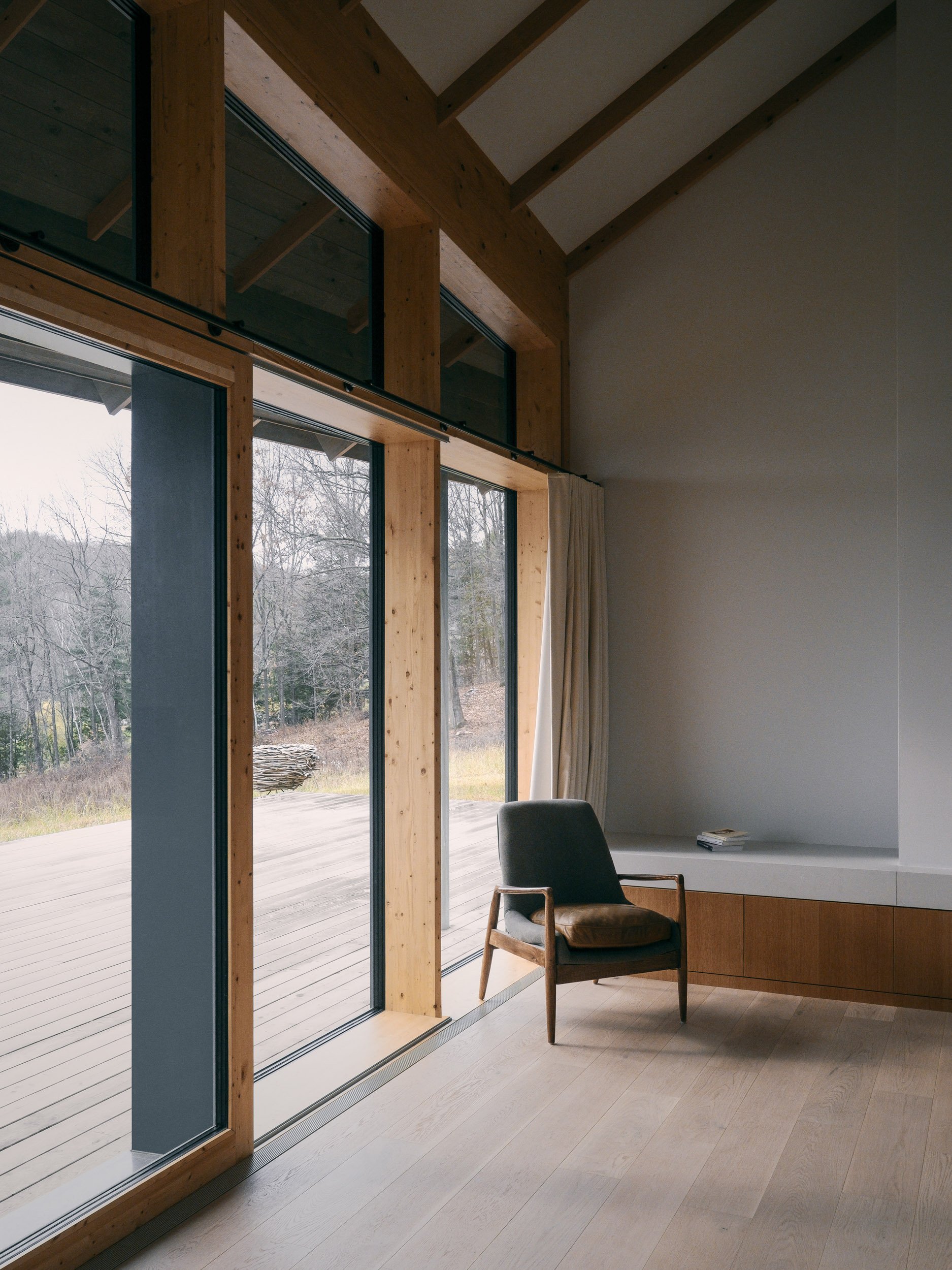Virgin Vineyard House: Heritage and Nature Across Generations
Situated between an old logging road and a working hillside vineyard, the Virgin Vineyard House derives its name from a farm whose ruins once stood above the site. The new residence is built with minimal disturbance to the vineyard, capturing views overlooking Lake Massawippi in Quebec's Eastern Townships. The new building will house the client and allow her to age in place and accommodate her daughter's growing family.
The project's design draws inspiration from the prevalence of fieldstone walls in the local agricultural landscape. Gathered stones start as a landscape feature separating the house from the road, ultimately comprising the north wall of the building. The architectural element is a secondary feature clipped onto this stone wall, sheltering the living spaces from the road and the northerly winds and discreetly tucking them into the hillside. The length of the wall enacts the sequence throughout the house, punctuated as it is by compositional events of window, chimney, entry, and courtyard. The south side of this long linear residence is open to lake and vineyard views under a sizeable protective overhang.
This 155' long house conveniently organizes the private bedrooms at either end, while the central gathering spaces convene in the middle of the linear house. The walls dividing each room are purposefully rotated for views facing the lake. This simple geometrical twist creates an oblique relationship between the rooms and the roof ridge line, making the rooms feel like private sheds, each with its unique volume directed towards the lake. In the initial plan, the rooms are arranged in a sawtooth formation, creating recesses of semi-private spaces under the large roof overhang to contemplate the view. Within this seemingly simple building are two large voids, one being a courtyard framing the angle of the logging road and the other a roof deck overlooking the entirety of the vineyard.
The building elucidates a relationship between a stone wall and wood tectonics. Aside from the heavily insulated stone wall on the north side, most of the construction materials are wood. For the central part of the house, this refers to light wood framing, either with studs, engineered lumber, or deep joists. On the south facade, however, wood is employed structurally in the mullions of the wood glazing system, a highly performative envelope with triple glazing throughout.
Wood construction held great interest in reducing embodied energy and minimizing the carbon footprint while also providing an excellently insulated envelope. Going beyond the environmental considerations, all the materials - lumber, hemlock cladding, stone, and high-performing glazing systems - were locally sourced in Quebec. Moreover, geothermal ground source heating was not merely a conventional choice but an exceptionally advantageous element in Quebec. Carbon-free municipal electricity powered the heat pumps, making them a genuinely beneficial system. Above all else, the architects connected profoundly to the location, meticulously weaving it into every aspect of the project, from materials to craftsmanship and even traditional forms of Quebec architecture. This connection served as their guiding star, guiding them through the design process. Presently, the owner collaborates with a local horticulturist, actively planting indigenous flora to nurture and preserve the site's natural habitat.
Photography by Félix Michaud




















